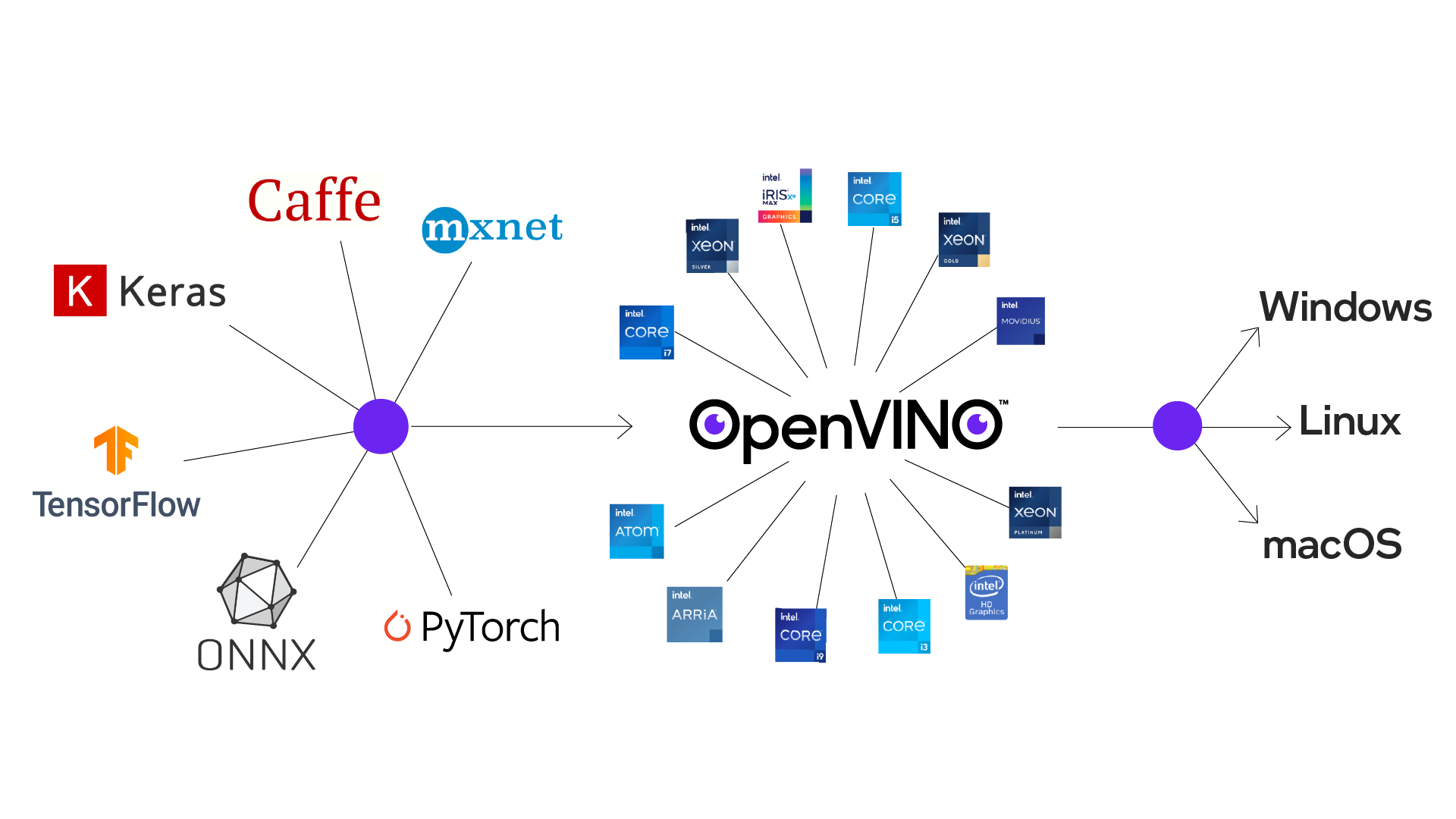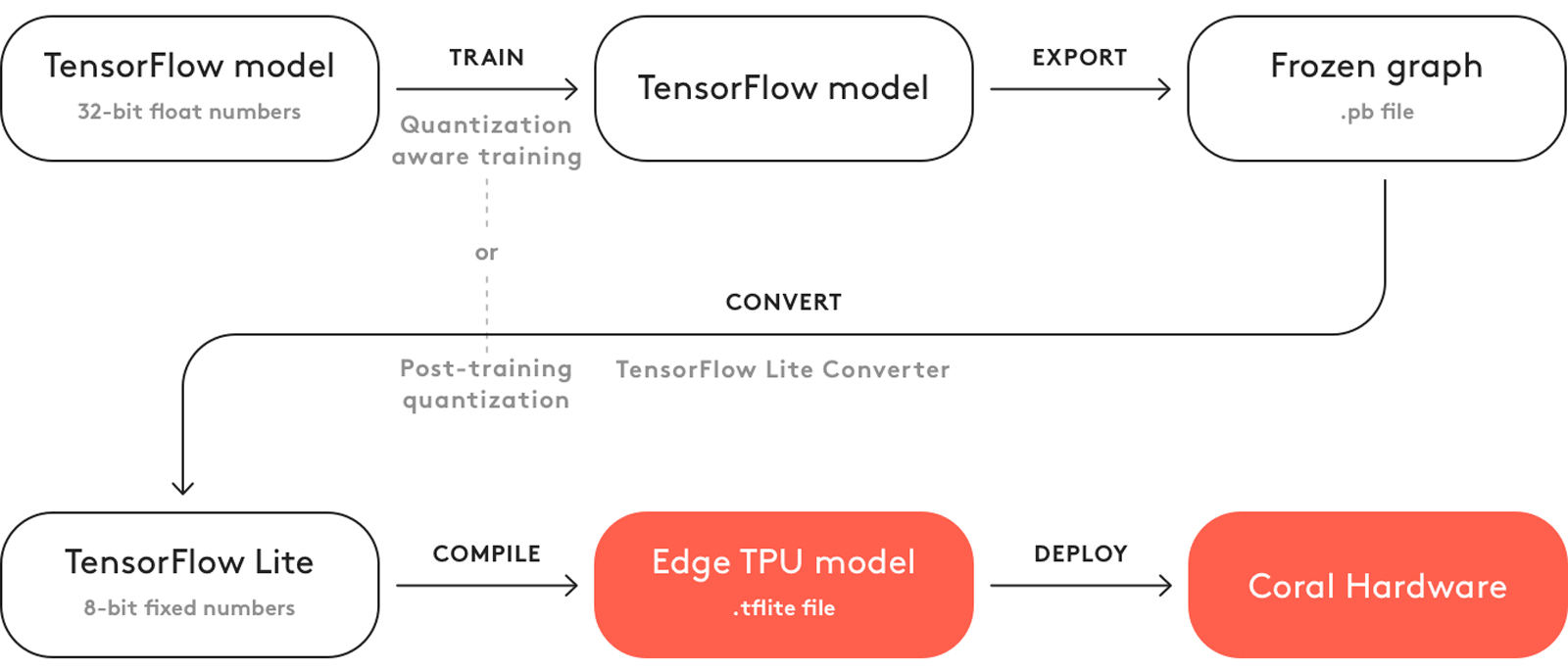Typical Single Board Computer Ecosystems for Edge Computing
A Single Board Computer (SBC) is a computer where all the components are placed on one Printed Circuit Board (PCB). This report provides an overview of the relevant SBCs available on the market today and discusses the important hardware components and available software tools. Since there are hundreds of types of SBCs in existence for a very wide range of applications, it is impossible to discuss all of them. Hence this report relies on the major overarching ecosystems to define groups of SBCs and will give a general explanation of existing edge computing ecosystems with SBCs and their specific characteristics. Furthermore, the SBCs in the chosen ecosystems are, whenever possible, compared based on hardware specifications and performance in benchmarks for specific Machine Learning based computational tasks, where the starting point will be existing standardized benchmarks.
Existing Ecosystems for SBC hardware
NVIDIA
NVIDIA has developed a specific series of Single Board Computers, called Jetson, for various AI-related applications. This product family includes several generations of CPU and GPU products with some key differences towards computing capabilities. The main added value in the context of Edge-AI of the Jetson series is the on-board hardware for acceleration of ML-related calculations, so that these devices have a performance for AI inference and at the same time minimize the necessary power consumption. An important hardware component when choosing a Jetson SBC is the on-board Graphical Processing Unit (GPU). The first generation Jetson uses the Maxwell GPU architecture, followed by the Pascal architecture. The latest generation of Jetsons uses the Volta architecture where an important addition are the Tensor Cores, these cores provide significant performance gains in inference because of the ability to do mixed precision floating point calculations to optimize ML models very flexible. Furthermore, it is true that NVIDIA not only provides hardware solutions but also an extensive set of software libraries to make the best use of the hardware accelerators present on the SBCs. Important software in this ecosystem is the Jetpack SDK which includes a linux operating system for the Jetson SBCs and further bundles all other important libraries. For example, there is the CUDA computing toolkit to provide GPU computing, cuDNN the CUDA deep learning accelerator framework and Tensor RT which is a framework to handle ML tasks such as image classification, object detection, image segmentation, minimize latency and accelerate inference. Furthermore, there is the image processing framework Visionworks which can optimize a large number of image processing tasks. In addition to the Jetpack SDK, they recently added the NVIDIA Transfer Learning toolkit. This software serves specifically to make pre-trained ML models for a range of use cases available for direct use in AI applications. The models are optimized for inference on NVIDIA hardware and aim to minimize the time to market since one does not have to start from scratch. The available models can also be adapted (transfer learning) to specific use cases. The Jetson SBCs available today are the Jetson Nano, Jetson TX2, Jetson Xavier NX and the Jetson AGX Xavier. The main differences between these SBCs are listed below.
- Jetson NanoThe Jetson Nano is NVIDIA’s first generation SBC and features a Quad Core ARM A57 CPU and a 128-core Maxwell GPU and has an AI performance of 472 GFLOPs.
Specifications of Jetson Nano Jetson Nano SBC
AI performance
472 GFLOPs
CPU
Quad Core ARM A57 CPU
GPU
128-core Maxwell GPU
Memory
4 GB 64-bit LPDDR4 25.6GB/s
Storage
SD-card when dev kit otherwise eMMC 5.1
CSI Camera
4 cameras D-PHY 1.1 (18 Gbps)
Power
5W - 10W
Deep Learning Accelerator
None
Vision Accelerator
None
- Jetson TX2The Jetson TX2 is the successor to the Jetson Nano and is available in several versions. This SBC has significantly more computational power and also features a newer GPU architecture (Pascal) with 256 GPU cores.
Specifications of the Jetson TX2. Jetson TX2
AI performance
1.33 TFLOPs
CPU
Dual-Core NVIDIA Denver 2 64-Bit CPU + Quad Core ARM A57 CPU
GPU
256-core NVIDIA Pascal GPU
Memory
8 GB 128-bit LPDDR4 59.7 GB/s
Storage
32GB eMMC 5.1
CSI Camera
6 cameras D-PHY 1.2 (30 Gbps)
Power
7.5W - 15W
Deep Learning Accelerator
None
Vision Accelerator
None
- Jetson Xavier NXThe Jetson Xavier NX is the first SBC of the newer Xavier family and features massively more computational power in comparison to the Jetson Nano and TX2. Furthermore, this SBC includes a GPU with the newer Volta architecture with 384 GPU cores and also 48 of the advanced Tensor Cores.
Specifications of the Jetson Xavier NX. Jetson Xavier NX
AI performance
21 TFLOPs (INT8)
CPU
6-core NVIDIA Carmel Arm v8.2 64-bit CPU
GPU
384-core NVIDIA Volta GPU + 48 Tensor Cores
Memory
8 GB 128-bit LPDDR4x 51.2GB/s
Storage
SD-card when developer kit otherwise 16 GB eMMC 5.1
CSI Camera
6 cameras D-PHY 1.2 (30 Gbps)
Power
10W - 15W
Deep Learning Accelerator
2x NVDLA
Vision Accelerator
7-Way VLIW Vision Processor
- Jetson AGX XavierThe Jetson AGX Xavier is a more advanced SBC in the Jetson range and is available in regular and industrial version.
Specifications of the Jetson AGX Xavier. Jetson AGX Xavier
AI performance
32 TFLOPs (INT8)
CPU
8-core NVIDIA Carmel Arm v8.2 64-bit CPU
GPU
512-core NVIDIA Volta™ GPU + 64 Tensor Cores
Memory
32 GB 256-bit LPDDR4x 136.5GB/s
Storage
32-64 GB eMMC 5.1
CSI Camera
6 cameras D-PHY 1.2 (40 Gbps), C-PHY 1.1 (62 Gbps)
Power
10W - 30W
Deep Learning Accelerator
2x NVDLA
Vision Accelerator
2x 7-Way VLIW Vision Processor
- Jetson AGX ORINThe Jetson Orin is an even more advanced SBC in the Jetson range and is available in several versions.
Specifications of the Jetson AGX Orin. Jetson AGX Orin
AI performance
275 TFLOPs
CPU
12-core Arm Cortex-A78AE v8.2 64-bit CPU 3MB L2 + 6MB L3
GPU
NVIDIA Ampere architecture with 2048 NVIDIA® CUDA® cores and 64 tensor cores
Memory
32 GB 256-bit LPDDR5 204.8GB/s
Storage
64 GB eMMC 5.1
CSI Camera
16 lane MIPI CSI-2 connector
Power
15W - 60W
Deep Learning Accelerator
2x NVDLA
Vision Accelerator
PVA v2.0
There are standardized AI benchmarks specifically for the Jetson SBCs. This freely available software tests the performance (inference) of a range of popular and relevant ML models available in the State of The Art today. This is a rapidly changing field and the results are best consulted at the source:
Intel
There are quite a few SBCs that use x86-based processors. Intel has built a framework to provide and optimize edge computing on their processor hardware. Intel produces, among others, the Intel Atom Processors for embedded applications, and the Intel Movidius Vision Processing Units to accelerate vision and AI workloads. Furthermore, it also offers the OpenVINO software toolkit and the Intel oneAPI toolkit to optimize ML workloads for all Intel hardware components.
Intel is focusing on accelerating and optimizing the entire ML pipeline, using primarily the Intel Xeon processor series with which it achieves high performance for a wide range of ML workloads.

ARM
ARM produces Intellectual Property (IP) for CPUs, GPUs and other hardware for a very wide range of applications. ARM is also very actively building an ecosystem to facilitate AI computing at the edge and facilitate and provide a rich set of tools for it. An overview of these tools is visible here:

This figure shows the capabilities of the ARM ecosystem starting from popular ML frameworks, to software optimized for ARM-based hardware products and finally the hardware components themselves. A large number of recent SBCs use ARM IP for their CPUs and GPUs. Furthermore, ARM also offers the specific Neural Processing Unit (NPU) co-processors to accelerate specific ML workloads. These are available for Cortex-M microcontroller systems but also for combination with the application processors in the Cortex-A series. The software provided by ARM includes the ARM Computing Library and the ARM NN SDK which, on the one hand provides GPU computing on the Mali GPUs and on the other hand provides a set of Linux-based tools to efficiently combine use of the Cortex-A CPU, Mali GPU and NPU that are typically present on the SBC hardware.
Google TPU
Google also has its own ecosystem to facilitate edge computing. For example, there is the Tensorflow software framework that can be freely used to build ML applications. In order to optimize models for SBCs and other hardware with less computational capabilities than a server or workstation, there is the Tensorflow Lite framework that allows to quantize the parameters of trained models and thus adjust the numerical precision of the parameters to the hardware specifications of the device that is to perform the inference. Google also has a hardware accelerator that can be used for models that are built with, or converted to, the tensorflow lite format. This accelerator, the Tensor Processing Unit (TPU), is a custom Application Specific Integrated Circuit (ASIC) that is designed to accelerate ML workloads and minimize power consumption to do so. The edge TPUs for SBCs, among others, can be found on the Google Coral hardware products. The workflow in the Google ecosystem is shown here:

Google Coral Dev |
|
|---|---|
AI performance |
21 TFLOPs (INT8) |
CPU |
NXP i.MX 8M SoC (quad Cortex-A53, Cortex-M4F) |
GPU |
Integrated GC7000 Lite Graphics |
Memory |
4 GB LPDDR4 |
Storage |
8 GB eMMC, MicroSD slot |
CSI Camera |
MIPI-CSI2 camera input (4-lane) |
Power |
2-3 A at 5 V DC |
Deep Learning Accelerator |
Google Edge TPU coprocessor: 4 TOPS (int8); 2 TOPS per watt |
Vision Accelerator |
Video Processing Unit |
Benchmarks are available that test the performance of popular ML (Neural Networks) models on TPU hardware and compares with CPU performance on a desktop and on an SBC. These benchmarks are frequently updated considering for example new ML models, thus it is best to consult the results at the source: